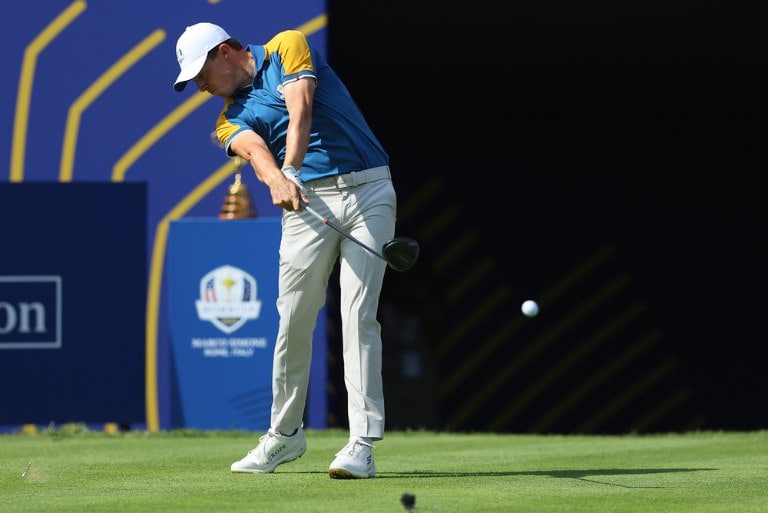Inside the Captain’s Mind: The Secrets Behind Ryder Cup Lineup Choices

The Ryder Cup’s magnetic appeal lies not only in its transatlantic rivalry but also in the high-stakes decisions made behind the scenes.
Every two years, captains for Team USA and Team Europe must sculpt lineups that balance current form, personality, and strategic nuance. These choices are shaped by more than just numbers; they reflect evolving philosophies, leadership styles, and the shifting landscape of professional golf.
As the 2025 contest at Bethpage Black approaches, understanding the captain’s mindset offers a window into the mental chess game that is part and parcel of this legendary event.
The Evolving Art of Pairings
Pairing players for the Ryder Cup is a complex blend of analytics, experience, and intuition. Captains now have access to advanced metrics such as strokes gained, driving accuracy, and putting stats to inform their decisions. Team Europe, for instance, has leaned on data to match rookies with seasoned veterans, a tactic that has paid off in recent Cups.
In the last ten events, 14 out of 21 European pairings that won at least two points had never played together before, highlighting the value of bold experimentation. Yet, successful pairings rarely feature two rookies; experience remains a critical anchor.
For Team USA, the challenge is often to find the right chemistry among a deep pool of talent, balancing raw skill with complementary personalities.
Reading the Venue: Course-Specific Strategy
Course setup is a decisive factor in lineup choices. The host team wields significant influence, tailoring the course to its strengths. In recent American-hosted Cups, layouts have been stretched to favor long hitters, leveraging the U.S. squad’s power advantage.
Bethpage Black, the 2025 venue, is expected to continue this trend with its demanding length and penal rough. Captains study these conditions meticulously, selecting players whose games align with the venue’s demands. These strategic decisions inevitably influence Ryder Cup odds, as sportsbooks adjust projections based on course setup advantages and player compatibility.
European captains, meanwhile, have historically set up courses to reward accuracy and short-game prowess, forcing the opposition to adapt. This venue-driven strategy adds another layer of complexity, requiring captains to anticipate not only their own team’s strengths but also the counter-moves of their rivals.
Managing Momentum: Deploying Stars and Rookies
Timing matters as much as talent. Captains must decide when to unleash their marquee players and when to trust emerging stars. Data from past Cups shows that a strong start often sets the tone, so experienced competitors are frequently front-loaded in opening sessions. However, introducing rookies alongside veterans can inject energy and resilience, especially in high-pressure moments.
For Europe, the practice of pairing first-timers with established players has yielded consistent results, while the U.S. has experimented with both stable and rotating partnerships. The ability to sense when to stick with a successful duo or pivot to a new combination is a hallmark of effective leadership.
Team Chemistry: The Human Factor
Beyond statistics, the Ryder Cup is a laboratory for team dynamics. Captains invest significant effort in building trust and camaraderie, knowing that unity can tip the scales in tight matches. For Team Europe, pairing countrymen or close friends has fostered a sense of belonging and mutual support.
The U.S. has recently emphasized open communication and group activities to create a more cohesive environment, a shift from the traditionally individualistic approach. Captains weigh personality compatibility alongside technical fit, aiming to create partnerships that thrive under pressure. This psychological dimension is often the difference between a team that rallies and one that unravels.
Navigating Pressure: Leadership Under Scrutiny
The captain’s role is defined by high-stakes decision-making and relentless scrutiny. Every pairing, substitution, and motivational tactic is analyzed by media and fans alike.
Recent years have seen captains like Keegan Bradley embrace a collaborative leadership style, involving vice captains and younger assistants in the decision-making process. This approach mirrors successful European models, where emotional support and team unity are prioritized.
Captains must remain flexible, adjusting strategies in response to evolving circumstances, be it a player’s sudden hot streak or an unexpected injury. The ability to project calm and decisiveness under stress inspires confidence and steadies nerves throughout the team.
Learning from History: Trends and Bold Moves
A review of recent Cups reveals both enduring patterns and the value of innovation. Stable pairings often outperform those with frequent changes, suggesting that familiarity breeds success. Yet, history also rewards captains willing to take calculated risks, such as breaking up established duos to spark new energy.
In 2018, Europe’s captain made a surprise switch that paid dividends, underscoring the importance of adaptability. For the U.S., the influx of new faces in 2025 (only two of the current top six were on the 2023 squad) signals a willingness to embrace change and inject fresh talent into the lineup.
Each Cup becomes a case study in balancing tradition with creativity.
Looking Forward: The Next Evolution in Ryder Cup Leadership
As analytics become more sophisticated and the pool of elite talent deepens, captains will continue to refine their approach to lineup selections. The 2025 Ryder Cup at Bethpage Black promises a showcase of contrasting leadership styles—Bradley’s energetic, collaborative ethos versus Donald’s steady, data-driven hand.
Future captains may experiment with even more granular data, psychological profiling, and innovative team-building techniques. Yet, the human element, intuition, trust, and adaptability, will remain at the heart of Ryder Cup strategy. For fans and players, the ongoing evolution ensures that this iconic event will stay a proving ground for both golfing excellence and the art of decision-making under pressure.




